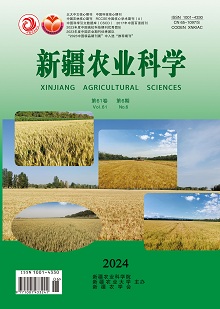【Objective】 To study the effect of high temperature on the germination of thick skin melon seeds and the differences in high-temperature tolerance among different thick skin melon varieties in the hope of providing theoretical basis for the selection of more high-temperature resistant thick skin melon varieties and the seedling management and promotion application of thick skin melon. 【Methods】 Five main thick skinned melon varieties in Xinjiang with different heat resistance, Nasmi, Huangpi 9818, Xinmi 14 (Xinhongxincui), Huangmengcui and Kalakesai (Jiashigua), were used as test materials, and treated at 4 temperatures (28 (CK), 35, 40 and 50℃). The germination potential, germination rate, germination index and activity index of thick skinned melon seeds at the germination stage were compared. Superoxide dismutase (SOD) The activities of peroxidase (POD), Catalase (CAT), Malondialdehyde (MDA) and proline (Pro) contents were studied. 【Results】 The seeds of 5 thick skinned melon varieties were able to germinate and grow normally at 28℃, and the germination was relatively neat; At 35℃, muskmelon seeds could germinate faster, but excessive germination led to overgrowth and uneven growth; At 40℃, the germination effect of seeds was similar to that of 35℃, with slight inhibition of growth and acceleration of elongation, but not enough to distinguish the differences in heat resistance among varieties; At 50℃, the germination of melon seeds was delayed, and the embryonic roots gradually decayed after germination. The high-temperature inhibition effect was significant, and there was a significant difference in germination ability between strains. At 50℃, the antioxidant enzyme activity of varieties with good heat resistance increased, while the antioxidant enzyme activity of varieties with poor heat resistance decreased. SOD and POD played a greater role than CAT, and the increase in MDA was inversely proportional to heat resistance, while the increase in proline was directly proportional to heat resistance. 【Conclusion】 The five thick skin melon varieties can be divided into two different heat tolerance levels: heat resistant and heat sensitive. The heat resistant types are Huangmengcui and Nasimi; Heat sensitive type: Huangpi 9818, Xinmi 14, Kalakesai. Three thick skinned melon varieties (Huangmengcui, Nasimi, Huangpi 9818) bred through cross breeding have better heat resistance during seed germination than the other two typical Xinjiang melon landraces (Xinmi 14, Kalakesai).

